Vernon Arias is a biologist based in the town of Cóbano, Costa Rica, located in the southernmost part of the Nicoya Peninsula, a region that once teemed with wildlife.
However, due to the construction of habitat-disrupting real estate, as well as the actions of poachers, much of the area’s most-beloved species are at risk of extinction.
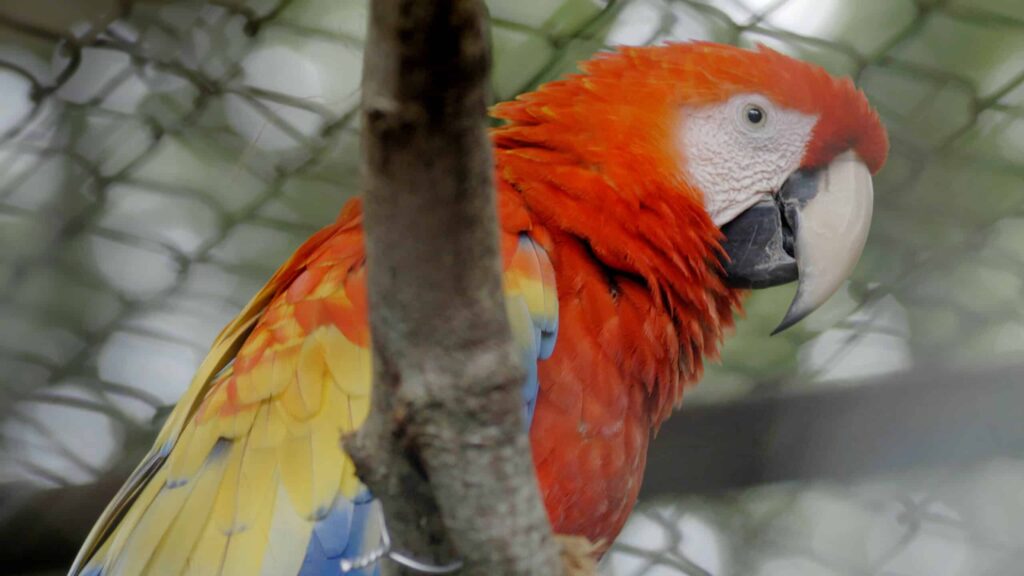
One such species is the scarlet macaw, a bird that is not only beautiful, but essential to the proper functioning of the ecosystem.
Vernon’s mission is to repopulate the peninsula with scarlet macaws, a feat he accomplishes through his work with non-profit organization ASOPROLAPA.
What Led to Vernon Arias Becoming a Conservationist?
Vernon is from the province of Cartago, Costa Rica. His childhood experience was defined by his contact with the natural environment, the inspiration for his becoming a biologist.
He studied at The University of Costa Rica—one of the prestigious schools in all of Latin America—and eventually earned a degree in biology.
His educational focus was on wildlife, more specifically the management of wildlife in captivity.
Vernon Arias Discovers His Love for Scarlet Macaws
After graduating from college, Vernon Arias moved to Costa Rica’s Guanacaste province, where he worked with wild cats in captivity. It was here where he learned of the impending extinction of scarlet macaws.
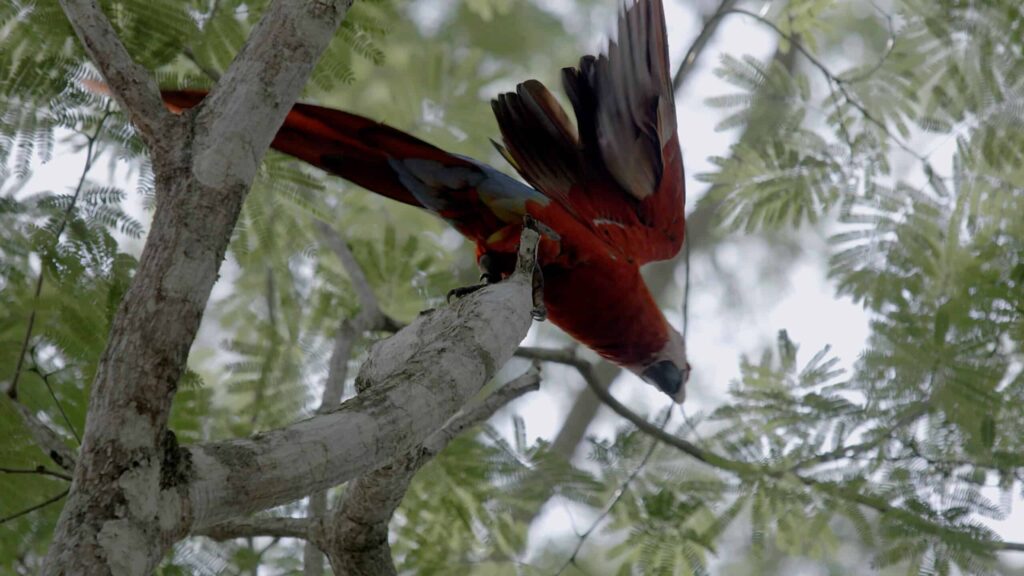
As he studied the species, both his love and concern for them grew. Before long, he shifted his primary focus from wild cats to scarlet macaws. He discovered ASOPROLAPA and committed himself fully to the organization.
Vernon Arias Tells the Story of ASOPROLAPA
Having spent many years working with ASOPROLAPA, Vernon is familiar with every facet of the organization.
He recounted the story of its 1996 formation: Ironically enough, the organization’s founder was an affluent real estate developer who took notice of the detrimental effects that construction had on the scarlet macaws’ habitat.
After receiving a few macaws as pets, he created the foundation in an effort to reintroduce them to the local environment. To this day, he remains ASOPROLAPA’s primary financial supporter.
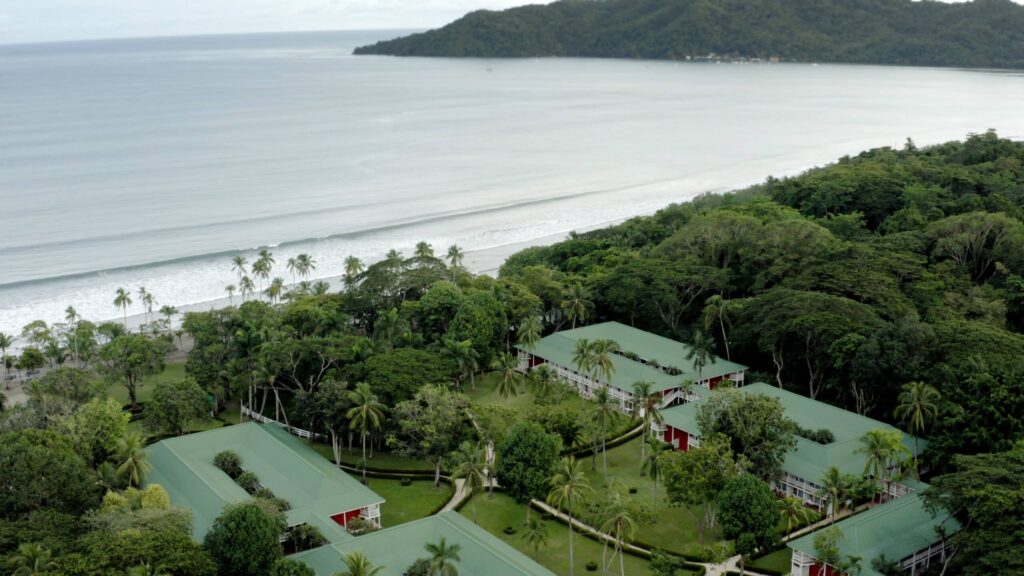
It should be noted that the destruction of the scarlet macaws’ habitat is not the sole reason for their endangerment. Unfortunately, there are poachers who will hunt scarlet macaws for sport, a practice that has decreased since being made illegal. However, some still take the risk.
So what exactly does ASOPROLAPA do to counter the impending extinction of the scarlet macaws?
First, they instigate a scarlet macaw reproduction process, which takes place within a hatchery. When the creatures are mature, they are released little by little into the wild. (Two groups are released per year.)
Even individuals that cannot be released into the wild, whether this be due to negative behaviors or disabilities, are used for education.
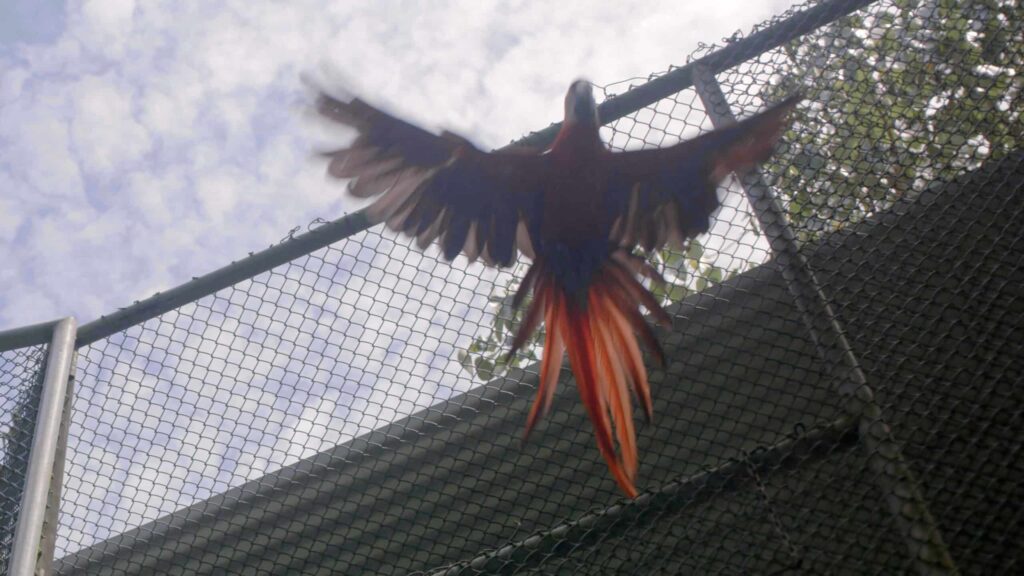
Vernon and his team also perform school seminars, in which they teach the children about the biological role of the scarlet macaws and the importance of conservation.
Students even take part in ASOPROLAPA’s activities by keeping records of their scarlet macaw sightings, thus providing the organization with information as to where the macaws are concentrating.
What Makes Vernon Arias an Everyday Hero?
Vernon’s work to preserve scarlet macaws is heroic for a number of reasons. Firstly, the reintroduction of the species into the environment has given locals, many of whom grew up seeing scarlet macaws in the wild, a sense of community.
The birds were, for a time, a defining aspect of Costa Rican life. Through the work of Vernon and his teammates, this may once again be a reality.
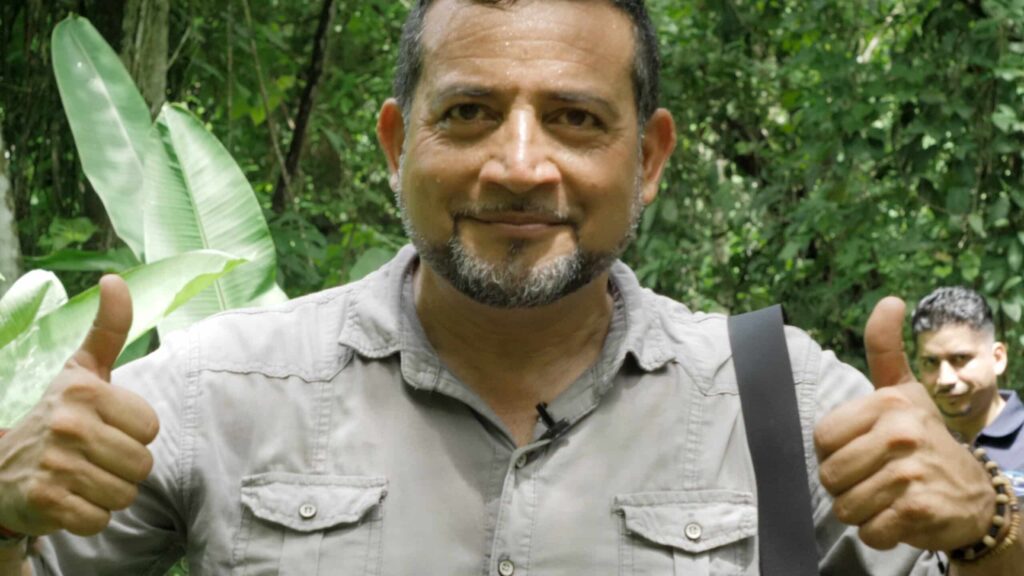
And because scarlet macaws are not found outside of Latin America, their increasing presence in Costa Rica has boosted tourism, therefore aiding the local economy.
Additionally, Vernon’s work is beneficial for the environment, as scarlet macaws play a vital role in the ecosystem.
According to Maya-Ethnozoology.org, the species “is very important for the environment because they feed on more than 45 plant species. While they mostly feed on fruit and seeds, they also feed on young leaves, flowers, and barks. When Scarlet macaws fly from tree to tree, they drop the seeds, helping to disperse the seeds.”
As Vernon puts it, scarlet macaws are “gardeners of the forest.”
What Impact Has Vernon Arias’s Work Made? What Are His Future Plans?
Currently, ASOPROLAPA has released approximately 200 scarlet macaws into the wild. The birds have reproduced, and their habitation has increased tourism, boosting the local economy and the Nicoya Peninsula’s residents’ quality of life.
Vernon has also acted as a positive role model for the children he educates. His teachings extend far beyond the subject of scarlet macaws:
He demonstrates the importance of conservation and boosts the self-esteem of his students by informing them of just how important each one of them is in creating a more sustainable world.
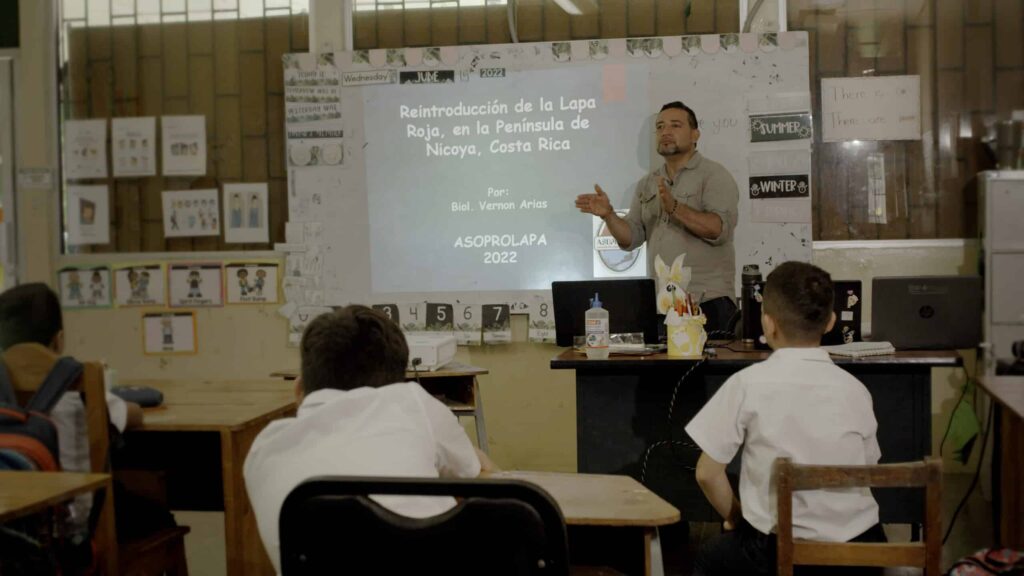
Aside from preserving the species, Vernon and his team have also conducted research that has widened the scientific community’s knowledge of the scarlet macaw.
Before releasing macaws into the wild, they place a microchip-containing ring around each bird’s claw, allowing for satellite tracking.
This way, ASOPROLAPA can trace the movements of released birds, learning more about their migratory process.
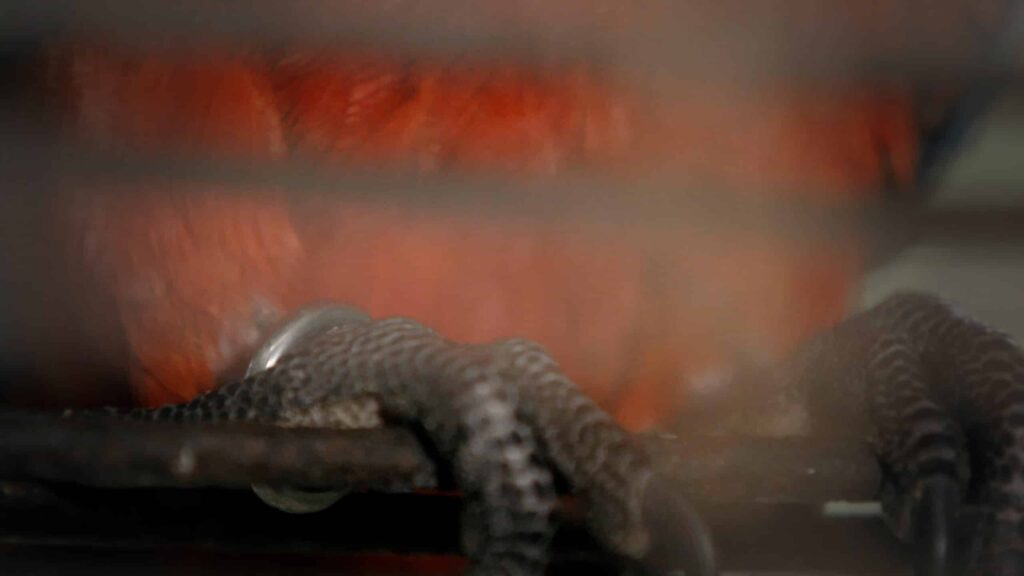
While ASOPROLAPA’s work has made an immeasurable impact on the Nicoya Peninsula, the organization is not even halfway towards achieving Vernon’s current aspirations. Currently, his goal is to release 500 macaws into the wild.
He also wishes to expand the organization’s education program, speaking to more schools, as well as hotels and tourist resorts, informing outsiders of Costa Rica’s abundance of wildlife and ways that they can help continue species’ survival.
Vernon Arias on Heroism
Given Vernon’s lifetime spent in servitude to the natural world, he is undoubtedly an everyday hero. But who are his heroes?
He has a few: firstly, his parents, who not only provided him with the education necessary to do what he currently does, but raised him in an environment where he had great contact with nature.
Secondly, he names his university professors. Lastly, he sees the children he educates as his future heroes, as they will take what they have learned from him and hopefully expand upon it when they reach adulthood, furthering the environmental protection movement.
Did you miss Tracey Lemon’s Featured Showcase?
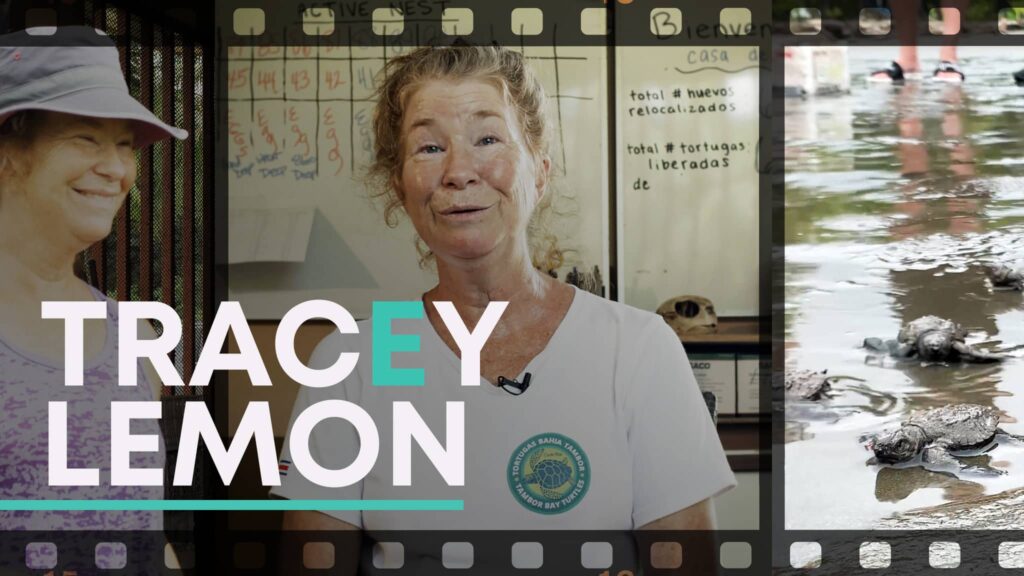
Locally, Vernon is regarded as a hero: “There is a lot of respect for the work done by the association. People associate me with the species. They call me “The Biologist.” I don’t know them, but they know me. I must emphasize that the residents of the Nicoya Peninsula identify themselves with the species [the scarlet macaw].”
To his audience, he leaves this advice, “When you visit a new country, please respect the wildlife. Do not try to strengthen the illegal market of a species.”
Vernon Arias Is a Hero
Vernon Arias has utilized his expertise in the field of biology to do impactful humanitarian work.
By working to preserve the scarlet macaw, he is creating a better local ecosystem and a more viable environment for tourists, both of which vastly improve the lives of Costa Ricans.
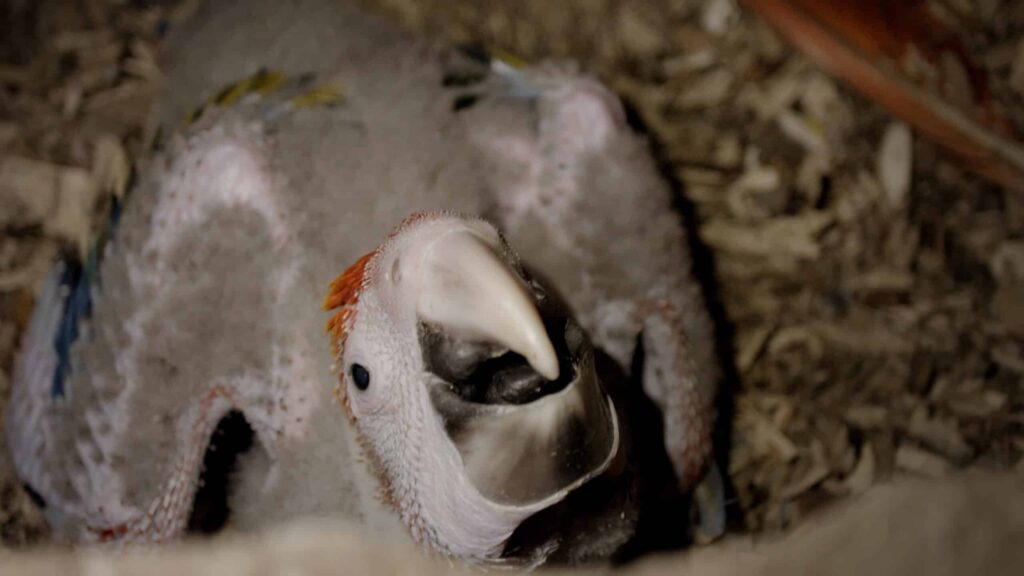
Additionally, his work with children has empowered future generations to continue the work he has begun.
He has instilled a sense of purpose within his students, giving them data collection roles in ASOPROLAPA.
Because of the work of Vernon and his team, the younger generation can once again grow up amongst the beautiful scarlet macaws.